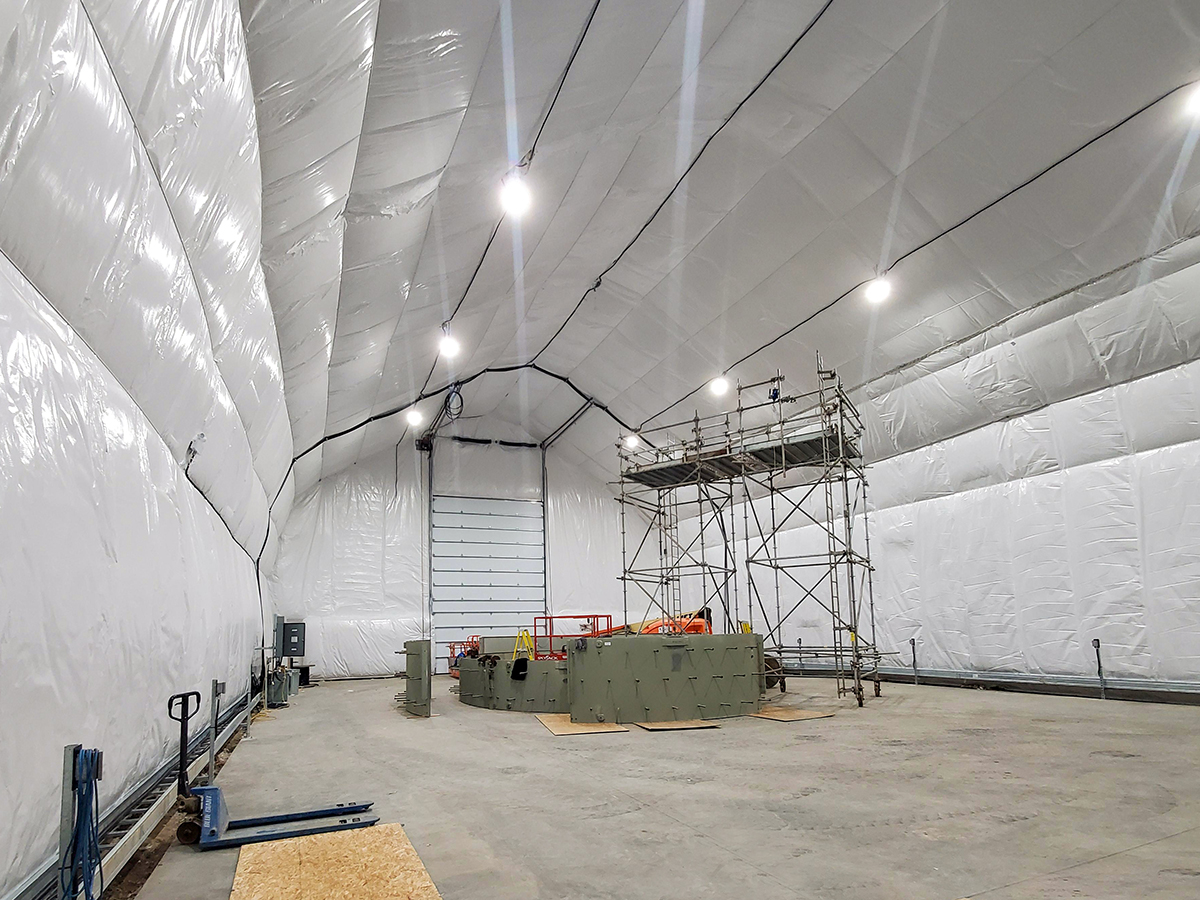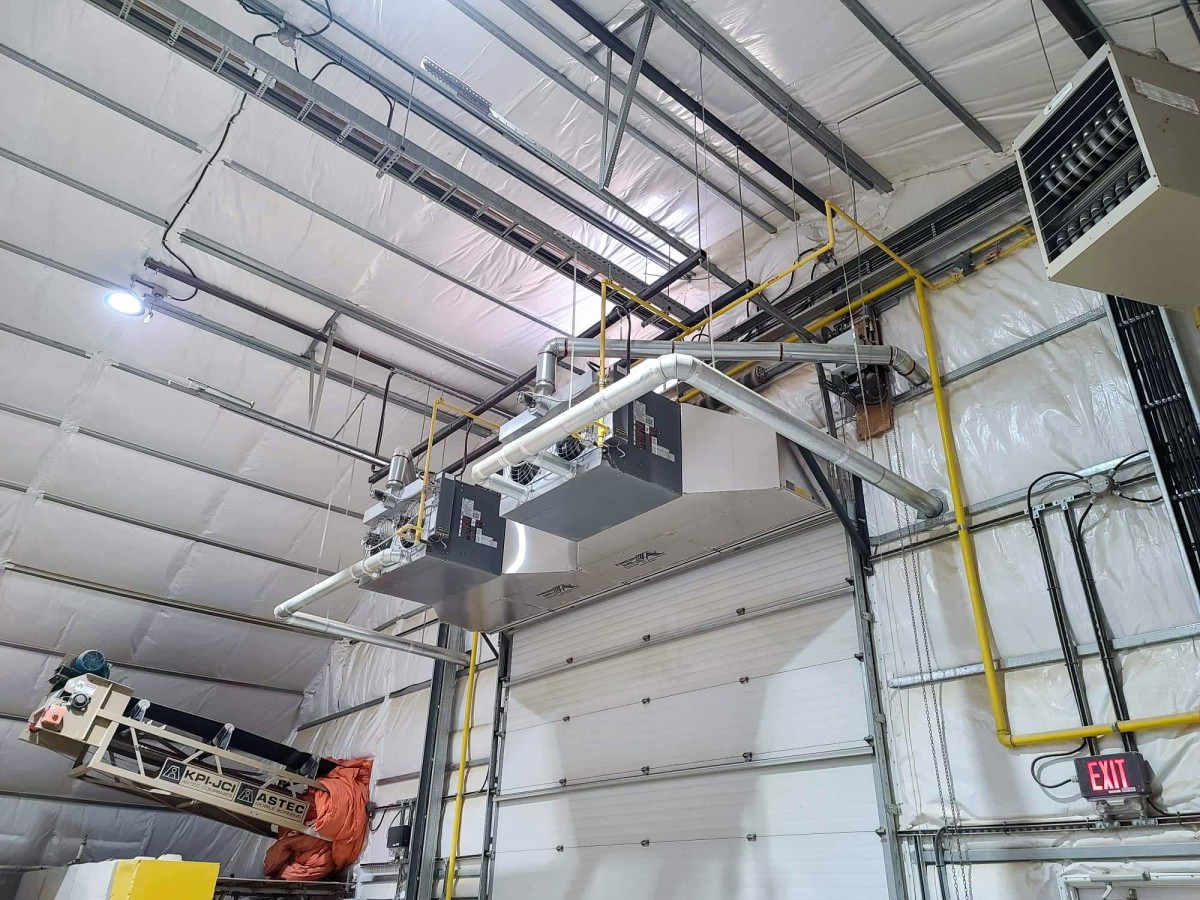By: Cobra Structures Team
Cold spells during Canadian winters can get harsh. This makes exploring climate-controlled options to keep fabric buildings warm during the Canadian winters a must. It’s also why our engineers use site-specific building codes, occupation categories, and local weather loads to make sure each building is convenient for your operations all year long.
Naturally it may seem like a fabric-covered building would lose heat and be colder than other options, the opposite is actually true.
Fabric Building HDPE Material
The inside of a non-insulated fabric building will stay five degrees warmer than the outside temperature in the winter. In comparison, a steel building will actually get colder than the outside temperature, acting almost like a cooler box! With fabric, it has to do with the inherent thermal properties of high-density polyethylene (HDPE) fabric. HDPE is a thermoplastic made from petroleum. It has a one in 10,000,000 rate of failure, which is better than any other material. The harder surface of HDPE fabric also sheds snow load more effectively.
Climate-Controlled Features

Of course, five degrees warmer than the actual temperature won’t cut it during the winter — at least in Canada it won’t. This is especially true for fabric buildings serving as a year-round operations facility and not just a storage warehouse. This is where are controlled features, and mechanical division, enter into play.
Insulation Options
For starters, we offer insulation packages that are based on the specific building’s needs. Insulation comes in different R-values, which measure how well the insulation can prevent the flow of heat into and out of the building. Higher R-value = greater insulation performance.
Our installation team has plenty of experience outfitting fabric buildings with R-30 insulation, the number we recommend to keep them nice and warm. The maximum value we offer is 60. Our insulation yields extremely high-efficiency buildings and has a soundproof element for recreational or event buildings.
Heating Options
With the help of our mechanical division, we also offer several heating methods for fabric structures. We can install in-floor, radiant or forced-air heat, as well as air curtain ventilation systems for maintaining ideal temperatures when dealing with a building site that sees frequent traffic in and outside via large overhead doors.
Plus, we also take care of installing all insulation and heating in-house! Whether it’s natural gas, propane, or electric — Cobra Mechanical has you covered.
Fabric Building Engineering & Weather Resistance
Because of the inherent tensile strength of fabric buildings, they resist wind, rain, and snow load easily. Fabric buildings will deflect the elements while metal building designs encourage blunt resistance against the wind, with roof lines often allowing snow to accumulate and compress roof infrastructure.
In addition to providing wind blockers and shields for precipitation and snow, fabric buildings are the most economical and flexible building solutions for everything from salt storage buildings, warehousing storage, and waste and recycling buildings. The extra high clearance allows for maximized cubic storage while covering commodities from the effects of weather.
Our installation team is here for you 12 months a year. We’ve completed all sorts of projects in the harshest of environments, travelling as far as remote locations in the Canadian Arctic! Our insulated, portable buildings are ready for all types of job sites — you just tell us where!





